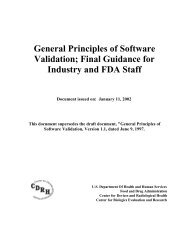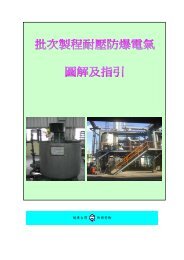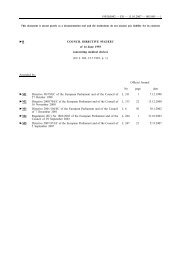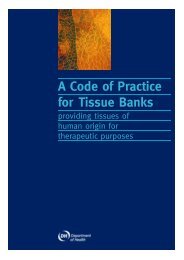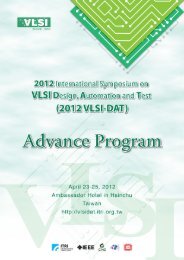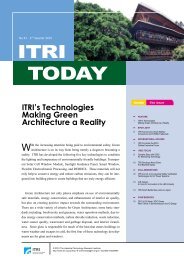Design Control Guidance - Food and Drug Administration
Design Control Guidance - Food and Drug Administration
Design Control Guidance - Food and Drug Administration
You also want an ePaper? Increase the reach of your titles
YUMPU automatically turns print PDFs into web optimized ePapers that Google loves.
As discussed in Section C (<strong>Design</strong> Input), it is beneficial in almost every case to conduct aformal review of the design input requirements early in the development process. Thenumber of reviews depends upon the complexity of the device.• For a simple design, or a minor upgrade to an existing product, it might beappropriate to conduct a single review at the conclusion of the design process.• For a product involving multiple subsystems, an early design task is to allocate thedesign input requirements among the various subsystems. For example, in amicroprocessor-based system, designers must decide which functions will beperformed by hardware <strong>and</strong> which by software. In another case, tolerance buildupfrom several components may combine to create a clearance problem. Systemdesigners must establish tolerance specifications for each component to meet theoverall dimensional specification. In cases like these, a formal design review is aprudent step to ensure that all such system-level requirements have been allocatedsatisfactorily prior to engaging in detailed design of each subsystem.• For complex systems, additional reviews are often built into the development plan.For example, engineering sketches may be developed for prototyping purposesprior to development of production drawings. Evaluation of the prototype wouldtypically culminate in a formal design review. Similarly, software developmentcommonly includes a high-level design phase, during which requirements areelaborated to a greater level of detail <strong>and</strong> algorithms are developed to implementkey functions. A formal design review would typically be conducted to review thiswork prior to beginning detailed coding.There are a number of approaches to conducting formal design reviews at the end of thedesign process. In some organizations, engineering essentially completes the design, testsan engineering prototype, <strong>and</strong> conducts a formal design review prior to turning the designover to manufacturing. In such cases, an additional review will be needed after the designhas been validated using production devices.In some instances, components having long lead times may enter production prior tocompletion of the overall device design. The primary motivation for early production is toreduce time to market. The manufacturer runs the business risk that the design review atthe end of the design process will uncover a defect that must be corrected in productiondevices before any devices are distributed.All of these approaches to scheduling formal design reviews are valid. What is important isthat the manufacturer establish a reasonable rationale for the number <strong>and</strong> type of reviews,based on sound judgment.SELECTION OF REVIEWERS. In determining who should participate in a formaldesign review, planners should consider the qualifications of reviewers, the types ofexpertise required to make an adequate assessment, <strong>and</strong> the independence of thereviewers. Each of these concerns is discussed briefly in the following paragraphs.Section E. <strong>Design</strong> Review 3/11/97 Page 25



